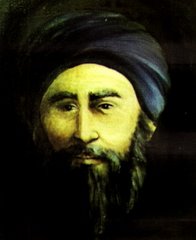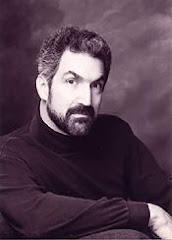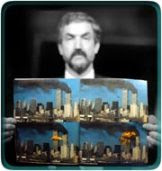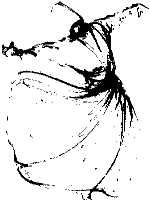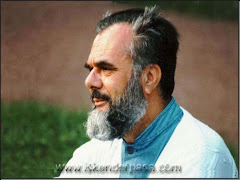
Saturday, September 28, 2013
COMMENT: The perils of islamicomedy

Wednesday, September 25, 2013
MEDIA: Media, violence and imams
A Muslim human rights lawyer has attacked the media over its coverage of Sheik Taj Aldin Alhilali during a women's rights function.
Alhilali's explosive comments comparing women who don't wear the Islamic headscarf to "uncovered meat" were also condemned at Australia's launch of the White Ribbon Day campaign in Sydney.
White Ribbon Day was created by 14 Canadian men in 1991 to denounce violence against women. The United Nations declared it an international day of activism the same year.
More than 200 politicians, sports stars, health professionals and cultural representatives will promote the worldwide campaign as "ambassadors" during the lead-up to White Ribbon Day on November 25.
One of the ambassadors at the launch, in the rocks, human rights lawyer and columnist Irfan Yusuf, condemned Sheik Alhilali's comments as "nonsense".
:If it weren't nonsense, then how do we explain the fact that women wearing head scarves sitting at home often get attacked as well?" he asked.
Then Mr Yusuf hit back at the media over the extent of the coverage of the sheik's sermon and its aftermath, calling responses by politicians and "allegedly conservative" columnists "sectarian-wedge politics".
The sheik's controversial remarks, condemned by Muslims and non-Muslims alike, received media coverage worldwide.
"I found it amazing that one particular newspaper spent eight pages on the issue of Sheik (Alhilali) and his comments," he said.
"You would have thought Sheik (Alhilali) just delivered the budget, or he just won his third election in a row."

POLITICS: Jihadi kids
[01] In recent days, the Harakat al-Shabaab al-Mujahideen (or Movement of Stiving Youth) have made international headlines by holding up a shopping centre in Nairobi, killing shoppers and staff, and taking hostages. These antics are seen by the group as the preferred method of championing an ideology that is somewhere between warped Islam and crazed Somali nationalism.
[08] Here is an excerpt from what Ian Birrell wrote in The Independent:
Somalia is seen as the ultimate failed state, an ungovernable hellhole plagued with poverty, conflict and hatred. Curiously, it is one of only two African nations sharing a single language, religion and culture; the other is Botswana, one of the continent’s biggest success stories. Yet it is riven with historic rivalries between hundreds of nomadic clans and sub-clans. The last person to rule with any real authority was a military dictator, Siad Barre, whose overthrow in 1991 sparked the chaos that still engulfs the country.
One million Somalis have been killed since then, twice that number displaced and much of the country reduced to rubble. Half a million Somali exiles now live in Kenya, where even before this vicious attack they faced growing hostility. But while many of the country’s problems were self-induced, with feuding warlords growing rich as they ripped apart their own country, Somalia’s problems were worsened by bungled interventions from outside.
Go back eight years, and a semblance of normality had returned to the country. Western-backed warlords had been defeated and the Union of Islamic Courts, a coalition of Islamic conservatives, enforced the rule of law. There was security in Mogadishu, with families knowing a son or daughter would return from a trip to the shops rather than end up bleeding in the streets; unsurprisingly, the courts were popular, despite often intolerant rulings. The possibility of genuine peace hovered on the horizon.
But a united, stable and Islamic country was the last thing Ethiopia wanted on its doorstep. So it invaded in the name of driving out fundamentalism, persuading Britain and the United States to back their key ally in the region. The incursion was disastrous, with Somalia spiralling back out of control, while grotesque human rights abuses boosted the militant cause. The biggest beneficiary was the security wing of the courts movement, al-Shabaab, which soon had control of much of Mogadishu and great swathes of the country.[09] A July 2011 report on Al Shabaab by Ron Wise of the Centre for Strategic & International Studies states that the movement started out as the youth wing of a mainstream Muslim political party that rose to power in Somalia in early 2006. Ethiopia invaded in December 2006, after which Shabaab became a popular militia with nationalist aspirations of removing Ethiopian forces from Somalia. It was only in 2008 that Shabaab has slowly and gradually made the transition into a group having linkages with al-Qaeda.
[10] Wise suggests that Ethiopia can take major responsibility for radicalising Shabaab. The Ethiopians drove out the more moderate Islamic Courts Union (ICU) administration from Somalia. The ICU kept a check on Shabaab going down a more radical path.
[11] After ICU were driven out, Shabaab took control of large tracts of land in Somalia. In a lawless land, these areas provided citizens with some rule of law and stability, which made Shabaab even more popular and assisted with its recruitment drive.
[12] Wise says that Somalia's started with the overthrow of military dictator Mohammed Siad Barre in 1991. Since that time, competing warlords have committed atrocities against civilians, leading to some 1 million being forced to flee Somalia. Hundreds of thousands have died from starvation, famine and violence.
[13] The ICU was a federation of 11 courts formed in mid 2004. By June 2006, the ICU, with the help of its militia Shabaab, had crushed the warlords. Wise claims that Shabaab was a remnant of the most radical remnant of ICU, its members influenced by Saudi-style wahhabi Islam which was contrary to the traditional sufi Islam followed by most Somalis.
[14] Dr Kisiangani Emmanuel of the Institute for Security Studies based in Pretoria South Africa has written an excellent paper comparing the Shabaab and the Lords Resistance Army. Emmanuel claims the two groups emerged out of comparable contexts and were motivated by genuine grievances. Emmanuel says that these groups can only be fought properly when they are understood and when their often grievances are addressed. This way the hearts and minds of the local population can be won over, this removing the incentive for locals to support the extremists.

Monday, September 16, 2013
REFLECTION: Learning Islam – The Traditional Way
I have a confession to make. I am a huge fan of what is known as “traditional Islam” (let’s call it “TI”). This is a method of teaching and learning the classical sciences of Islam.
I understand TI goes something like this. You decide what classical Islamic subject or subjects you wish to study. You sit with someone qualified to teach at least the subject you want to learn. You sit and learn that subject with that teacher, either on an individual basis or in a class.
Once the teacher is satisfied with your mastery of the subject, he/she gives you authorisation to teach. That authorisation is called an ijaza, and it states the limits within which you can teach the subject. It could be as broad as more than one discipline or as narrow as a chapter of a book.
Your teacher is able to give you an ijaza because he/she has an ijaza from his/her teacher, who in turn has an ijaza from his/her teacher etc etc. This chain of ijaza is known as a sanad.
I haven’t done any research on the matter, but I suspect most qualified imams in Australia have learned their classical Islamic knowledge this way. Certainly this is how Islamic sciences are taught in classical institutions such as Dar al-Uloom Deoband in India or in similar classical institutions in Yemen, Syria and Morocco.
TI is a great method of keeping alive our classical Islamic tradition. Some of the great emerging voices of Islamic scholarship in the West have studied and qualified under this methodology, including Hamza Yusuf Hanson, Zaid Shakir, Nuh Ha Mim Keller and our very own (as far as Sydney-siders are concerned) Naeem Abdul Wali.
These scholars are at the forefront of communicating Islamic ideas in a manner relevant to Western communities, Muslim or otherwise. But are they able to do this just because of TI? Does anyone honestly believe that, when faced with a contemporary challenge, Western TI scholars only refer to classical commentaries?
I asked this question of Azhar Usman, stand-up comedian and director of the Nawawi Foundation, a US-based think tank which promotes Islamic sciences in the TI tradition. Other directors of the Nawawi Foundation include Dr Ingrid Mattson, who studied Islam in modern universities and is current President of the Islamic Society of North America (the US and Canadian version of our “AFIC”).
The Chairman and Scholar-in-Residence of the Foundation is Dr Umar Faruq Abd-Allah, one of a galaxy of TI scholars in the US. Apart from studying classical sciences abroad, Dr Abd-Allah also did a PhD in Islamic Studies at Chicago University under one Professor Fazlur Rahman.
Why am I mentioning all this? Of what relevance does all this have to Australia?
Following the terror attacks of September 11, scholars of TI have come to the forefront of not only condemning the attacks but also identifying the root causes of the attacks. Azhar Usman believes that what tempted some Muslims to sympathise the attackers was a form of Islam which teaches us Western Muslims to regard only a narrow set of things as “Islamic” and to reject everything else as “un-Islamic”.
TI is different. TI regards everything as potentially Islamic with the exception of those things which are clearly proscribed in the sacred law of Islam (known as the sharia) as un-Islamic.
Hence, TI practitioners like Dr Abd-Allah contend that there is nothing un-Islamic about communicating Islamic ideas using stand-up comedy. When the Nawawi Foundation takes people on study tours to various parts of the current (or, in the case of Spain, former) “Islamic” world, Azhar Usman usually comes along to act as “court jester”, performing a show for his fellow tourists.
Usman told me he regards Islam as like a clear spring with no odour or taste or colour except for those provided by the elements of its path. Hence, Islam can be communicated using a variety of cultural methods.
Usman’s hero is one of the great scholars and communicators of Islam in Indonesia, known to his people as Sunan Kalijaga. The genius of Kalijaga lay in the fact that he was able to combine essentially traditional cultural symbols (wayang shadow puppetry and gamelan orchestral music) to communicate classical Islamic ideas. Today, wayang and gamelan are regarded as classical methods of communicating Islam in the world’s largest Muslim country. In Indonesia, the methods of Sunan Kalijaga are part of TI.
So there are some Australian Muslims claiming to represent TI who pretend that studying Islam in a conventional university is not consistent with TI principles. They criticise institutions such as the Centre for Excellence in Islamic Studies headed by Professor Abdullah Saeed of the University of Melbourne.
But as I learned from Azhar Usman, if TI can recognise the value of communicating Islamic ideas using traditional cultural symbols, why can’t it recognise Islam communicated in a conventional university?
Or to put it in the Prophet’s (s) terms: “Wisdom is the lost property of the believer …”
(This article was first published on 8 August 2007 in Salam, the official publication of the Federation of Australian Muslim Students & Youth or FAMSY)

Friday, September 13, 2013
BOOKS: War On Error: Real Stories of American Muslims
War On Error: Real Stories of American Muslims
Melody Moezzi
The University of Arkansas Press, 2007
Dr Umar Fariq Abd-Allah, a prominent American theologian, once described his adopted faith as akin to water which has no colour or shape of its own and takes on the colours and shapes of the places through which it flows.
“In China, Islam looked Chinese; in Mali, it looked African. Sustained cultural relevance to distinct peoples, diverse places and different times underlay Islam's long success as a global civilisation.”
So how does one apply this model of Islam to Muslims brought up in Western societies, whether as children of nominally Muslim migrants or as converts embracing a new faith? So often, we presume that Muslims are somehow more religious than followers of other faiths. Perhaps this is because the Muslim voices most often heard are those seeking to represent their vision of religious orthodoxy as opposed to Muslim cultural realities.
In Australia, some more embarrassing self-appointed Muslim spokesmen (and I mean men literally - as if women would say such silly things!) have become household names. Yet their views on sexual violence and polygamy hardly accord with Australian Muslim opinion (at least I hope they don’t), where domestic violence is frowned upon and polygamous relationships only exist in the less formal and more sinful realm.
When we assume those seeking to speak on behalf of Islam in Australia necessarily also speak on behalf of Aussie Muslims, we end up often with an image that is distorted and not reflective of Muslim reality.
So can we apply this presumption of heterogeneity to other Western Muslims, including those in North America? Enter Melody Moezzi, a self-confessed “thinking, feeling, educated, and stubborn Muslim Iranian American woman”, a lawyer and writer brought up in Ohio and now residing in Atlanta. Moezzi’s first book, War On Error, provides pen portraits of twelve young American Muslims, including herself, her American Muslim convert husband Matthew and her childhood Iranian friend Roxana.
Moezzi makes clear that her work aims “to affirm the experiences of Muslim Americans as American experiences, as grounded in the American dream and the American ethic as any others” (emphasis is Moezzi’s). It is a risky and possibly self-defeating strategy, potentially giving rise to criticism that her insistence on Muslim heterogeneity involves presumptions of American homogeneity, of the existence of a singular monolithic “American ethic”.
Thankfully, Moezzi’s portraits don’t give rise to any stereotyping. Each individual profiled has a completely different reason to regard him or herself as Muslim, even if more devout Muslims might question their stated beliefs and lifestyle choices. Most of Moezzi’s profiles are of relatively unknown people with interesting stories. I was particularly pleased that Moezzi includes a profile of a bisexual Muslim, thus recognising that whatever we might think of homosexuality, not all Muslims are straight.
However, I was disappointed Moezzi spends an entire 11 pages on prominent Wall Street Journal writer Asra Nomani, who has already written about her own life in her well-known memoir Standing Alone In Mecca. Moezzi would have been better off finding a less well-known and more interesting Muslim, perhaps a former prison inmate or an African-American serviceman.
Indeed, the complete absence of a non-migrant (or distant migrant) African-American Muslim voice in Moezzi’s book is troubling. There is much bitterness among African-American Muslims about what many see as the dominance of migrant Muslims from the Middle East and Asia in Muslim religious and community affairs. African-American Muslims – whether of the more heterodox “Nation of Islam” variety or from more mainstream denominations - are a growing force in American Islam. America’s first two Muslim Congressmen are both African-American. It seems curious that Moezzi could not find a single African-American Muslim prepared to talk about his or her faith on the record.
It’s tempting to be put off by the somewhat clumsy title - War On Error – Moezzi gives to this her first book. Is she declaring war on the erroneous notions of American Muslims in the popular mindset? Is she suggesting that the current so-called war on terror has lost its direction? Or was the title just selected by her publisher?
Regardless of how or why so named, this book does much to dispel the many errors in public perception about Western Muslims. However, the limited sample of stories, dominated by migrants and converts (virtually all from Moezzi’s family, friends and friends of friends), and the complete absence of any African-American Muslim presence, provides an unnecessarily skewed vision of American Islam.

Sunday, September 08, 2013
SPORT: Fawad Ahmed and the beer logo ...
These comments are out of order … He is an Australian citizen and he is eligible to play cricket for Australia and he has been selected to play for Australia irrespective of his religious beliefs. He is an Aussie and he is welcome to play cricket for his country and any suggestion to the contrary we are strongly opposed to. Some people have used this issue to move away from the central debate, which is largely a commercial issue about sponsorship and taken that into a space as to whether he is entitled to play cricket for Australia or live in Australia and is just rubbish. They are bigoted views.

Sunday, September 01, 2013
HUMOUR: Another round of Ramadan lunar-cy
This week, a fair proportion of 400,000-odd Australians who tick the 'Islam' box on their census forms will mark the start of Ramadan.
Ramadan is the 29 or 30 days when Muslims are supposed to refrain from eating, drinking, smoking and intercoursing between sunrise and sunset. If they can be bothered getting up in time, they have a light breakfast. At the end of the day, they have a small meal followed by their sunset (maghrib) prayers and then dinner. After dinner, people head to the mosque for extra prayers that can take anything from 30 minutes to two hours (depending on which mosque you go to). We then hit the sack and get ready to do it all again the next morning.
The whole exercise is supposed to fine tune your soul, weaken the ties binding you to your physical appetites and test your religiosity. You do it for a whole month, and you do it at the same time as the entire Muslim community. Ramadan is a lunar month, and this month unites Muslims around the globe in an envelope of piety and mercy.
At least that's the theory.
Christians, unless they're Orthodox, know that Christmas is on 25 December each year. But Ramadan in fact starts at different times, depending upon when the moon is sighted. Now you'd think that after 1400 years, Muslims would have figured out how to perform the simple task of sighting the moon. Think again.
My mum's Ramadan calender states that Ramadan begins on Tuesday 9 July 2013. I picked up this calender for her from a Lebanese restaurant in south western Sydney. Had I picked it up from a South Asian spice shop, the start date would have been perhaps one or two days later. If I'd visited a mosque managed by the Turkish government-aligned Diyanet Vakfi (Religious Trust), I could purchase a calender which determines all lunar months for the next few decades, if not centuries.
Turks 'sight' the moon by relying on astronomical calculations. They think that since science has progressed so far that man can now walk on the moon, it seems a bit pointless to insist on sighting it with your naked eye. Cypriots, Bosnians and Albanians agree.
Muslims of Indo-Pakistani, Bangladeshi, South African and Indo-Fijian backgrounds insist on sighting the moon with their naked eyes. Their Ramadan usually begins one or two days after the Turks. Indonesians and Malaysians tend to follow the Arabic-speakers who generally start their Ramadan on the same day as the Turks. Some nationalities follow the fatwas of overseas religious authorities such as Saudi Arabia or Malaysia.
Aussie converts tend to be confused by the whole confusing spectacle of lunar-cy. That, or they start with whichever community is least condescending and most welcoming to them. It's amazing how universal religion can bring out the nationalism and cultural chauvinism in many Muslim migrants.
Then there is the issue of eating. Muslims aren't the most punctual people on the planet. But when it comes to a fast-opening (iftar) gathering, they're always on time, because they know that a huge feast awaits them on arrival. The real test during Ramadan is how on earth all that food is going to be finished. Pakistani iftar gatherings are especially ghee-filled affairs with up to 20 separate dishes filling the smorgasbord.
Most Muslims break their fast with a single date and a glass of water before spreading the mats out for the sunset prayer. Indo-Pakistanis prefer to stuff their faces with a fruit salad called chaat and deep-fried spicy potato cakes called pakora. The chaat salad is composed of three parts chopped fruit, two parts lemon juice, four parts curry powder and approximately 500 parts sugar. A duty free sized block of Toblerone would be lighter on the aorta.
And so for most of us, Ramadan is the month of massive weight gain.
For iftar gatherings earlier on in Ramadan, the blokes somehow roll their way to the mosque for the long tarawih prayers. The process of merely bending over to perform ablutions and walking up a few flights of stairs can be a struggle. But imagine standing in prayer in a row of blokes burping the contents of their iftar with some frequency. Still, why try beating them when you can join them?
In Melbourne, where Muslims are somewhat less disorganised, corporate iftar parties are all the rage. SBS, ABC, various banks and telcos hold iftar parties for leading members and hangers-on in the community. Imagine the view they must enjoy over the Melbourne Harbour footbridge or whatever it's called.
Canberra is the land of embassy iftar parties. Some years ago I hosted a morning drive show on a Ramadan radio station. I accidentally deliberately read an article on air which described Syria as a police state. Someone from the Syrian ambassador showed his devotion to free speech by ringing up the station organiser and making all kinds of threats. A few days later, I attended an iftar party at the Syrian embassy. The Lebanese food was scrumptious. The ambassador and all his staff were very polite. Perhaps I really do have the perfect face for radio.
As Ramadan comes to an end, people plan their day off; for the big day of Eid (or Bayram if you're Turkish, Bosnian or Albanian). Employers across the nation, take note: don't be surprised if your Muslim employees ask for different days off. The lunar-cy of determining the beginning of Ramadan is repeated at the end. I know some Sydney lunar-tic authorities who can't tell you when Eid is until the morning of Eid! One enterprising service sends you notice of the naked eye sighting of the moon by text message.
So welcome to Ramadan Aussie style in what would have to be the most disorganised congregation in the country. Anyone waiting for us to have the organisational skills to establish sharia government will have to wait until well after the next Ice Age. First published in Eureka Street on 08 July 2013.

EGYPT: Irrational fear of the Muslim Brotherhood
Dr Mohamed Morsi, Egypt's first elected president since independence, was not perfect. He inherited a basket case economy dominated by family and friends of Egypt's top army brass, among them former dictator (and ally of both the United States and Israel) Hosni Mubarak.
Morsi tried and failed to unite various elements of Egypt's civil society, even failing to get other religious parties (such as Saudi Arabia's salafist allies) on board. Morsi wasn't the most polished performer overseas. At home, he was viciously lampooned by satirists on TV, radio and in print. In his clumsily fitting suit and poorly-trimmed beard, he looked more like Yogi Bear than a statesman.
Egypt has been longer a home of Christianity than Islam. Six decades of military rule haven't made Egyptian Christians feel safer, especially with allegedly secular military strongmen using their power to spread anti-Christian hatred to deflect attention and manufacture religious scapegoat. This isn't a peculiarly Muslim or Egyptian phenomenon. Billy Hughes and John Howard each had pieces of Gamal Abdel Nasser and Hosni Mubarak in them.
But to many of Morsi's opponents inside and outside Egypt, his biggest imperfection was his affiliation to the Egyptian branch of the pan-Arab social movement calling itself al-Ikhwan al-Muslimeen (the Muslim Brothers or MB). The exact extent of his affiliation isn't very clear. Was he as close to the MB spiritual leadership as, say, Tony Abbott was to Cardinal Pell or the late Bob Santamaria? Or was he just one of those leaders who liked rewarding his political allies with cushy jobs, again something hardly unknown to Australian readers.
Some may find such comparisons offensive. They will insist there is a huge difference between Islamic chalk and Christian cheese. Christians don't declare jihad on other countries, nor do they seek to impose their theocratic politics on others. The MB is an Islamist organisation, much like to other Islamist organisations such as al-Qaida and Hezbollah and the Indonesian JI. Islamists aren't really committed to democracy. Islamists are theocrats at heart.
It's little wonder that those insisting on such reasoning will have little sympathy for any group meeting their label of Islamist. Which leads me to wonder: on what basis do we label individuals or groups 'Islamist'? Or 'fundamentalist'? Or 'extremist'?
How many times need it be said that it is impossible to have a monolith amongst a set of congregations making up almost one quarter of the world's human population? Further, when will anti-'Islamists' recognise that the history and politics and economics of Muslims is just as complex and complicated as the variations of history and politics and economics of Catholic communities? Political Catholics (or Catholic politicians, whatever) in El Salvador has different priorities to those in Germany to those in East Timor to those in Australia.
So if we want to get an understanding of why we should all be concerned with events in Egypt, let's start by removing our sectarian blinkers. This applies not just to anti-'Islamists' but also to the many Shia Muslims that perhaps regard Morsi as a Sunni sectarian fanatic for his opposition to Iranian and Lebanese Shia forces supporting the Syrian government. It applies also to other sectarian and political groupings across the Muslim world who have been fervently critical of Morsi and his government.
It also applies to people like me, people who were once 'radicals' and who once supported 'Islamic' movements (of which MB was one) largely because we were taken in by the Afghan jihad against the Soviet Union. We then became disillusioned with MB-style politics after seeing movements becoming embroiled in the Afghan civil wars that erupted after the Soviets withdrew and the American cash dried up.
In Egypt, many 'Islamists' also became disillusioned with and left the MB. But groups like MB never left their communities. Even when they ceased their political role, successive Egyptian dictators saw the MB as useful for providing social services – medical clinics, legal aid services, etc. The MB has been performing this role for decades. Its grass roots outreach is stronger than any purely political secular grouping in the country. Little wonder one of its allies won the presidential election.
When an elected government proves unpopular and incompetent, we only expect the army to intervene and a coup to take place if the country involved is Pakistan or Bangladesh or a central African nation. Indeed, these days it is rare even in Pakistan, Bangladesh and many parts of Africa. So why should our leaders speak almost approvingly of such a process taking place in Egypt?
It must seem hypocritical to the average person from a Muslim party, to the average cadre who would otherwise be volunteering in a health clinic or legal aid centre in downtown Cairo or Karachi or Jogjakarta. Or indeed Baghdad. The West can encourage democracy. It will even force-feed democracy (as in the Gulf War). It will jail hundreds of innocent people in Guantanamo Bay and in secret camps to protect what is left of its own democracy.
But woe betide any vaguely 'Islamist’ group which tries to democratise itself and its nation.
First published in Eureka Street on 20 August 2013.













